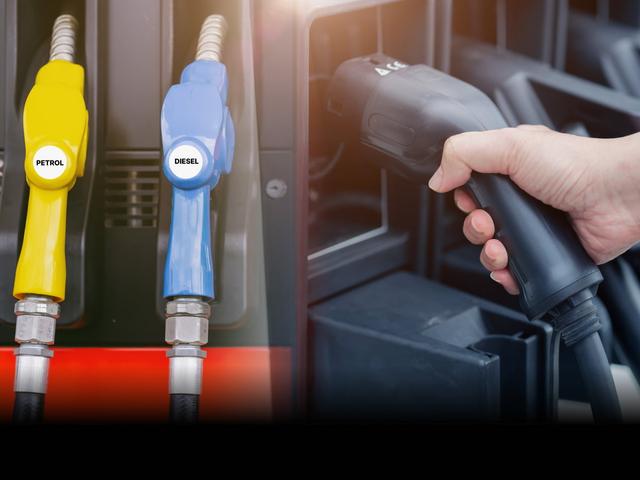


Blink blink !
Its almost here


What is Multi-Point Fuel Injection System (MPFI)?
- 1Multi-point fuel injection systems are more efficient than carburettors
- 2There are three main kinds of Multi-point fuel injection systems
- 3MPFI systems are most commonly seen in cars, SUVs, and light trucks
- What is a multi-point fuel injection system?
- How MPFI works
- Types of multi-point fuel injection systems
- Components of an MPFI system
- Advantages and disadvantages of MPFI systems
- Common applications of MPFI systems in vehicles
- Maintenance and common issues with MPFI systems
- Future of fuel injection systems: what’s next after MPFI?
- Conclusion
If you were to take a brief glance at the history of the automobile, you will notice that it is littered with innovative engineering feats. Over the years, plenty of advancements have been made with the aim of improving efficiency and performance. The advent of fuel injection, however, is arguably one of the more significant developments, rendering the use of carburettors almost instantly pointless.
More to the point, multi-point fuel injection (MPFI) technology was a real game changer for automobiles, and there are very good reasons behind this. This advancement helped vehicles become easier to maintain, have lower emissions, consume less fuel, and even improve performance.
What exactly is multi-point fuel injection, though? How does it affect the running of a modern engine, and does it make a tangible difference to the driver of the vehicle in any way? In our guide to everything you need to know about multi-point fuel injection systems, we will do a deep dive into this fascinating bit of tech and unearth exactly what makes it so useful.
What is a multi-point fuel injection system?
Before we get into the finer details of the multi-point fuel injection system, it’s important to understand what fuel injection is to begin with. Put simply, fuel injection is the process of introducing fuel into an internal combustion engine. Diesel (compression-ignition) and petrol (spark-ignition) engines have their fuel injection systems, providing portion fuel injection through small nozzles under high pressure in the combustion chamber. In the beginning, manufacturers used fuel injection systems in aviation to help pilots run the engine in any plane position. The first mass-produced diesel passenger cars with fuel injection appeared in the late 1930s. Early injection systems were inefficient, so they were quickly overtaken by carburettors.
The carburettor is a device that mixes air and fuel in the required ratio before letting it into the combustion chamber. It is technically simple, inexpensive, easy to maintain, and most importantly, it does not require electricity. Instead, it uses the engine’s natural air suction. Before the new era of microchips and complicated automotive electronics, carburettors prevailed on the market. But starting in the 1980s, injector technology came back. Modern injector systems are controlled electronically. They are more accurate and can cope with strict emission standards. They help you save fuel, provide more power at lower engine speeds, and increase overall stability.
When it comes to modern cars, there are three main types of fuel injection: single-point fuel injection, multi-point fuel injection, and direct injection. Single-point injection systems are the least used nowadays, and that’s mainly because they are the least reliable of the lot.
How MPFI works

In a single-point fuel injection system, there is only one nozzle in the throttle body, which sprays fuel to an air intake manifold shared by all cylinders. Air and fuel mix here and go to the cylinders through intake valves. This system is more precise than a carburettor and does not require significant changes in the engine. That said, the single-point fuel injection system isn’t deemed to be reliable, as the break of a single nozzle means the entire system is destroyed.
This neatly brings us to the multi-point fuel injection system. Here, all cylinders have separate nozzles, which inject fuel close to their intake ports. Doing this allows the car to use fuel more effectively. They connect to a fuel pipeline, and they work in tandem. Different types of multi-point injections depend on the nozzle synchronisation: Simultaneous, Batched, and Sequential. Simultaneous injection is the primary option, where several nozzles work together and inject the fuel simultaneously.
Types of multi-point fuel injection systems
Under the multi-point fuel injection system, there are three types of nozzle synchronisations. Each nozzle synchronisation kind comes with its own set of unique characteristics. They are:
1) Sequential MPFI system: Here, each fuel injector operates independently, delivering fuel to the corresponding cylinder's intake valve at a specific moment. This precise fuel delivery enhances combustion efficiency and power output and reduces emissions.
2) Simultaneous MPFI system: As the name suggests, this system simultaneously delivers fuel to all cylinders. Although it performs well, it is less precise than the Sequential MPFI system.
3) Batched MPFI system: Also known as the Grouped MPFI system, it divides the engine cylinders into groups or batches. Each batch receives fuel simultaneously, but the fuel delivery to each cylinder within the batch is not individually timed. While this system is cost-effective, it may reduce fuel efficiency and performance compared to the Sequential MPFI system.
It should be easy to understand that the most commonly used kind of MPFI is the sequential MPFI, thanks to its precise fuel delivery and overall efficiency.
Components of an MPFI system
The multi-point fuel injection system is a complex bit of technology. It is made up of various components that have very specific roles that work together to deliver the promised efficiency. The key components of an MPFI system are as follows:
1) Fuel Injectors: These electronically-controlled valves deliver fuel directly into the intake valves in a precise spray pattern.
2) Fuel Pump: This pressurises the fuel to ensure smooth delivery to the injectors.
3) Engine Control Unit (ECU): The ECU is the brain of the MPFI system, monitoring various engine parameters and controlling the fuel injection process accordingly.
4) Sensors: Various sensors, such as the throttle position sensor, oxygen sensor, and coolant temperature sensor, provide vital information to the ECU, enabling it to optimise fuel delivery.
Advantages and disadvantages of MPFI systems

Multi-point fuel injection systems have taken the automobile world by storm since their introduction in the ‘80s. Its enduring popularity ever since is no fluke, and there are a lot of good reasons behind the technology’s continued success. MPFI systems are known to improve engine performance and fuel efficiency, while reducing emissions.
That said, an MPFI system is not without its downsides. One of the most common complaints about MPFI tech is the fact that it’s made up of a lot of complex components, so it can be more expensive than a carburettor.
| MPFI Advantages | MPFI Disadvantages |
| MPFI systems continuously monitor exhaust gases and adjust the fuel-air mixture to maintain optimal engine performance. This leads to better fuel efficiency. | MPFI systems are generally more complex compared to carburettor systems, and are hence more expensive. |
| The combustion process is more complete compared to a carburettor, leading to fewer emissions. | Their sensitivity to low-quality fuel is well-documented, which can sometimes lead to clogging. |
| In extreme weather conditions, MPFI engines are known to start reliably. | Electrical issues have been reported to occasionally plague MPFI systems, which could lead to improper fuel delivery. |
| Despite their complex internals, MPFI engines are known to require minimal maintenance. | Not all vehicles are compatible with MPFI systems, especially older cars. |
Common applications of MPFI systems in vehicles
Thanks to the benefits that MPFI systems bring, the most common applications include modern cars, SUVs, and even light trucks. MPFI tech brings enhanced fuel efficiency, improved performance and lowered emissions to the table, which is vital for modern vehicles.
While MPFI systems are a popular option for most vehicles, another kind of fuel injection is direct injection. For the latter, it’s primarily used in diesel engines. Direct injection is even more expensive and complicated to set up in petrol cars. In direct injection, the fuel goes directly to the cylinders past the valves, allowing more control over the engine and measuring out the fuel with better precision. Direct injection systems need to be engineered better as everything inside the combustion chamber must be coordinated with accuracy, from the timing and length of sparking to air-fuel mixture flow to work done by the valves and nozzles. Bringing all this together in one cylinder is also a challenge: the combustion chamber must be bigger. This means the system is best in powerful cars with larger engines.
Maintenance and common issues with MPFI systems

With MPFI systems, it is best to get the system periodically cleaned to ensure optimal performance. Regular maintenance should include periodic inspection and cleaning of fuel injectors, fuel filters, and intake valves. It is recommended to follow the manufacturer's maintenance schedule and guidelines to ensure the longevity and optimum performance of the MPFI system, especially considering India's dusty and variable climatic conditions.
Regular maintenance of MPFI systems will also help curb some of the most common issues they face. For instance, it is well-documented that MPFI systems tend to clog when low-quality fuel is used for prolonged periods. They’re also prone to periodic electrical faults, which could lead to improper fuel delivery, and that could mean car breakdowns when you least expect it.
Future of fuel injection systems: what’s next after MPFI?
It should come as no surprise that the need of the hour is a more evolved method of fuel consumption. The world’s biggest concern at the moment is for the environment, and sustainable fuel injection solutions are emerging as the champions of eco-friendly transportation. Biofuels and hydrogen fuel cells are not just alternatives but they’re seen as a realistic way forward. These technologies are reshaping the future of transportation, giving us a peek into a world where emissions are low and efficiency is at its peak.
The integration of artificial intelligence is also increasing in fuel systems, helping increase fuel efficiency and reducing emissions. The idea is to have a future where algorithms fine-tune every injection, and machines learn to anticipate the needs of engines. Even with hybrid propulsion in vehicles, the union of electric power and fuel injection is helping us evolve into a cleaner and greener world.
Conclusion
It’s thanks to the invention of clever technology like fuel injection that we have efficient and powerful vehicles today. Over many years, fuel injection systems have evolved considerably. From carburettors to single-point injectors to today’s state-of-the-art multi-point fuel injection and direct fuel injection systems, manufacturers have worked hard to build ever more efficient and eco-friendly fuel injection solutions for their vehicles.
The biggest winner in all this is the end consumer. That said, there is room to improve, especially considering the background of the need for tighter emissions control to help protect the environment. Fuel injection systems may seem like just a small cog in the machine, but its evolution and progress will help vehicles become a lot more sustainable for the future.
Become a part of the official Cars24 auto community; CLUTCH, where we host lively auto discussions, updates, and more.
Frequently Asked Questions
Expand all

Blink blink !
Its almost here













.jpg&w=640&q=75)









Blink blink !
Its almost here

.jpg&w=828&q=75)
-(1).jpg&w=828&q=75)








